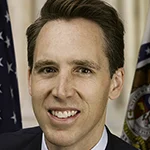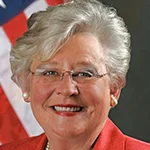 |
| Robert Dilenschneider |
This year we mark the 140th anniversary of what is considered the nation’s first Labor Day celebration. It was on Tuesday, September 5, 1882, and it was a parade organized by New York City’s recently formed Central Labor Union.
The number of participants is uncertain—estimates run from 10,000 to 20,000—but in any case, thousands of workers took unpaid leave and marched uptown from City Hall to a park at 92nd Street and Ninth Avenue (now Columbus Avenue) for a concert, speeches and a picnic.
Enormous shifts have taken place in the American economy during the succeeding 140 years. The industrial society of factories and mills that developed during the 19th century evolved as a succession of discoveries and inventions transformed the US into the world’s most dynamic and innovative economy, and much of the workforce fared well enough to enter the middle class.
In the second half of the 20th century, however, new developments reordered the nature of labor in America, from the emergence of a global economy and the outsourcing of manufacturing jobs, to the growth of an information age and a service economy driven by fast-moving technology.
The changes have often been stressful for workers, but Americans continue to be the most resourceful, resilient and enterprising people on Earth, and the US labor force continues to set the pace for the rest of the world in productivity.
And so whatever lies ahead in the coming years, the US is going to stay strong, creative and resilient. We have been, and continue to be, the world’s greatest nation, and whatever comes, we will remain a dynamic and humanitarian global leader.
That first Labor Day in 1882 evolved into a national holiday, of course. Here are some of the steps along the way:
- In February 1887, Oregon became the first state to declare Labor Day an official holiday.
- Later that same year, four more states—New York, New Jersey, Massachusetts and Colorado—passed similar laws.
- By 1890 Connecticut, Pennsylvania and Nebraska had followed suit.
- At the beginning of 1894, 31 states had adopted Labor Day as a holiday, although the dates varied.
- Finally on June 28, 1894, President Grover Cleveland signed a law making the first Monday in September a national holiday.
So, however you celebrate this holiday, take a moment to think about our Country’s impressive history and the vital role that American labor has always played—and continues to play.
Give thanks to those dedicated men and women, the American workers. And have a great Labor Day.
***
Robert L. Dilenschneider is the Founder and CEO of The Dilenschneider Group, an international communications firm that provides strategic advice and counsel to Fortune 500 companies and leading families and individuals in fields ranging from mergers and acquisitions, to crisis communications, to marketing, government affairs and foreign media.


 Democrats play their favorite game, which is bashing Big Oil for its effort to cast doubt on global warming... Wingnut Marjorie Taylor Greene justified her vote against the Antisemitism Awareness Act by sputtering antisemitic nonsense... The deeply politically polarized USA stands united in worries about 2024 election coverage.
Democrats play their favorite game, which is bashing Big Oil for its effort to cast doubt on global warming... Wingnut Marjorie Taylor Greene justified her vote against the Antisemitism Awareness Act by sputtering antisemitic nonsense... The deeply politically polarized USA stands united in worries about 2024 election coverage. What would you do if you have received a call from one of Musk’s few remaining top lieutenants to see if you would be interested in advising him on PR matters?
What would you do if you have received a call from one of Musk’s few remaining top lieutenants to see if you would be interested in advising him on PR matters?  Nike finally throws in the towel and admits that its new MLB uniforms are a flop... A good chunk (34 percent) of TikTokers support a ban on the Chinese app.... "Lede of the Week Award" goes to Wall Street Journal reporter Angus Berwick for story abourt John Jacob Astor IV's gold pocket watch.
Nike finally throws in the towel and admits that its new MLB uniforms are a flop... A good chunk (34 percent) of TikTokers support a ban on the Chinese app.... "Lede of the Week Award" goes to Wall Street Journal reporter Angus Berwick for story abourt John Jacob Astor IV's gold pocket watch. Republican tough guys Josh Hawley and Tom Cotton want Biden to send the National Guard to Columbia University to put an end to student protests... Bernie blasts Bibi for insulting America's intelligence by equating criticism of Israel's government with antisemitism... German court convicts former financial PR exec who claims he wasn't aware that trading on tips is illegal.
Republican tough guys Josh Hawley and Tom Cotton want Biden to send the National Guard to Columbia University to put an end to student protests... Bernie blasts Bibi for insulting America's intelligence by equating criticism of Israel's government with antisemitism... German court convicts former financial PR exec who claims he wasn't aware that trading on tips is illegal.  Southern governors claim they know what's best for their working class, and it's not pay raises... A Ukrainian human rights group played a key role in convincing House Speaker Mike Johnson to hold a vote to send arms to Ukraine, Israel and Taiwan... Trump Media & Technology Group blames short-selling and not lousy outlook for its stock slump.
Southern governors claim they know what's best for their working class, and it's not pay raises... A Ukrainian human rights group played a key role in convincing House Speaker Mike Johnson to hold a vote to send arms to Ukraine, Israel and Taiwan... Trump Media & Technology Group blames short-selling and not lousy outlook for its stock slump.


 Have a comment? Send it to
Have a comment? Send it to 
Sep. 2, 2022, by Bill Huey, Strategic Communications
Since productivity in economic terms means higher output for lower or stagnant wages, perhaps we should find some other way of celebrating Labor Day, such as the fact that we have unions at all, or that unions and management have found ways to work together rather than strikes or union-busting activity--as in the case of Starbucks today.